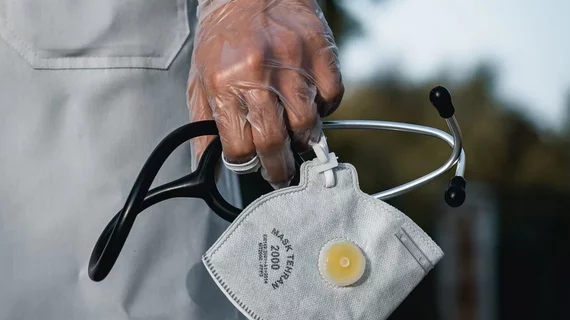As the coronavirus took hold in the U.S., clinicians quickly turned to medical imaging to help diagnose and treat patients.
One of the first radiologists to begin studying the disease, Ali Gholamrezanezhad, MD, a clinical emergency radiologist with USC Keck Medicine, has since authored more than 40 papers on the pandemic. He shared five insights and lessons Wednesday for other providers on the front lines.
1. Many patients have atypical symptoms
Chest CT or x-ray imaging typically reveals scattered patchy areas of inflammation in patients’ lungs, known as atypical pneumonia. This is often accompanied by coughing, breathing problems, fatigue and fever, he noted.
Gholamrezanezhad also said they’ve been surprised that some individuals don’t have these symptoms and are admitted with abdominal pain or other ailments such as stroke, which imaging later reveals to be connected to COVID.
“This may have to do with the fact that COVID-19 affects almost every organ in the body, not just the lungs as was originally thought when the pandemic first began,” he added.
2. Lung damage may be long-lasting
Up to 30% of people hospitalized with the virus have lung scarring months after their diagnosis. Such findings are more likely in those with serious infection or preexisting conditions and may cause breathing difficulties down the line.
It’s unknown whether scarring fades over time, but Gholamrezanezhad noted that a study of severe acute respiratory syndrome (SARS) found such lung damage lingered up to 15 years after diagnosis.
3. Pregnant women face unique risks
A review of 450 CT scans of pregnant women with the virus found about 30% with fluid buildup around their lungs, impacting normal breathing. Only 5% of the general population present with this symptom, he noted.
“This condition probably has to do with the body’s propensity to retain fluid during pregnancy, and is something obstetricians need to be aware of because it can lead to complications during delivery,” the USC imaging expert said.
4. Social distancing prevents spread
Gholamrezanezhad and others investigated how radiology equipment and resources have impacted worldwide fatality rates, looking at more than 20 variables in 40 countries.
The largest factor affecting death rates, he noted, was social distancing. Even a two-week delay in establishing such measures greatly increased death counts.
5. It’s an ever-changing problem
“Every day we are learning something new about COVID-19. What we know about this disease and how we treat it now may be dramatically different in six months to a year,” Gholamrezanezhad said. “As with all diseases, but never truer than with COVID-19, the learning phase in medicine never ends.”

